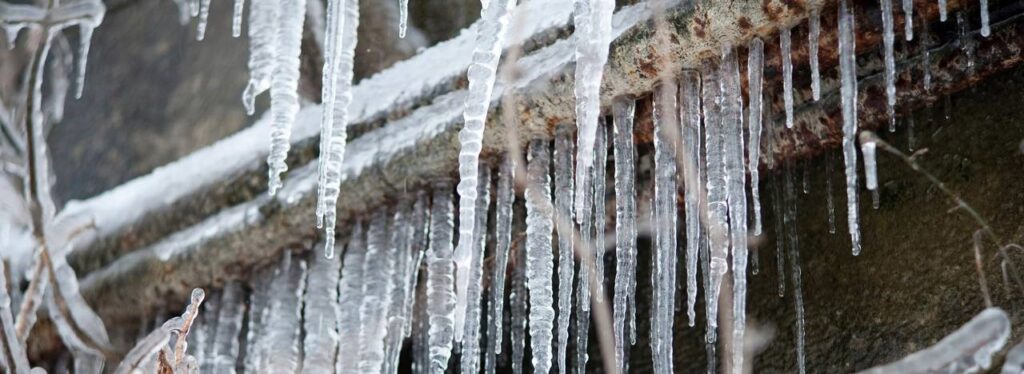Protect Against Frozen Pipes in Cold Weather: Professional Advice
Protect Against Frozen Pipes in Cold Weather: Professional Advice
Blog Article
Were you searching for suggestions involving How to Prevent Your Pipes From Freezing?

Winter can damage your pipes, especially by freezing pipes. Right here's just how to prevent it from taking place and what to do if it does.
Introduction
As temperatures decrease, the threat of frozen pipelines increases, potentially bring about costly repair services and water damages. Recognizing just how to avoid frozen pipelines is critical for home owners in chilly environments.
Avoidance Tips
Shielding at risk pipes
Cover pipes in insulation sleeves or make use of warm tape to protect them from freezing temperature levels. Focus on pipelines in unheated or external areas of the home.
Home heating techniques
Maintain indoor areas adequately warmed, especially locations with pipes. Open closet doors to permit cozy air to circulate around pipes under sinks.
Just how to determine frozen pipes
Try to find lowered water flow from faucets, unusual odors or noises from pipes, and visible frost on subjected pipes.
Long-Term Solutions
Structural adjustments
Take into consideration rerouting pipelines far from exterior walls or unheated areas. Include extra insulation to attics, basements, and crawl spaces.
Updating insulation
Buy top notch insulation for pipes, attic rooms, and wall surfaces. Proper insulation aids preserve consistent temperatures and minimizes the danger of frozen pipes.
Securing Exterior Plumbing
Garden hoses and outside faucets
Detach and drain pipes yard hoses before wintertime. Install frost-proof spigots or cover outside taps with protected caps.
Recognizing Frozen Pipes
What creates pipelines to freeze?
Pipes freeze when revealed to temperature levels below 32 ° F (0 ° C) for prolonged periods. As water inside the pipes freezes, it expands, putting pressure on the pipe walls and possibly causing them to burst.
Risks and damages
Frozen pipelines can lead to supply of water interruptions, property damages, and expensive repairs. Burst pipelines can flooding homes and cause extensive structural damage.
Indicators of Frozen Water Lines
Determining icy pipes early can stop them from rupturing.
What to Do If Your Pipes Freeze
Immediate activities to take
If you think icy pipes, keep faucets available to soothe pressure as the ice melts. Make use of a hairdryer or towels taken in warm water to thaw pipelines gradually.
Conclusion
Avoiding icy pipes needs aggressive measures and fast feedbacks. By understanding the causes, signs, and preventive measures, property owners can safeguard their plumbing during winter.
5 Ways to Prevent Frozen Pipes
Drain Outdoor Faucets and Disconnect Hoses
First, close the shut-off valve that controls the flow of water in the pipe to your outdoor faucet. Then, head outside to disconnect and drain your hose and open the outdoor faucet to allow the water to completely drain out of the line. Turn off the faucet when done. Finally, head back to the shut-off valve and drain the remaining water inside the pipe into a bucket or container. Additionally, if you have a home irrigation system, you should consider hiring an expert to clear the system of water each year.
Insulate Pipes
One of the best and most cost-effective methods for preventing frozen water pipes is to wrap your pipes with insulation. This is especially important for areas in your home that aren’t exposed to heat, such as an attic. We suggest using foam sleeves, which can typically be found at your local hardware store.
Keep Heat Running at 65
Your pipes are located inside your walls, and the temperature there is much colder than the rest of the house. To prevent your pipes from freezing, The Insurance Information Institute suggests that you keep your home heated to at least 65 degrees, even when traveling. You may want to invest in smart devices that can keep an eye on the temperature in your home while you’re away.
Leave Water Dripping
Moving water — even a small trickle — can prevent ice from forming inside your pipes. When freezing temps are imminent, start a drip of water from all faucets that serve exposed pipes. Leaving a few faucets running will also help relieve pressure inside the pipes and help prevent a rupture if the water inside freezes.
Open Cupboard Doors
Warm your kitchen and bathroom pipes by opening cupboards and vanities. You should also leave your interior doors ajar to help warm air circulate evenly throughout your home.

I was made aware of that article on Prevent Frozen Pipes from a good friend on a different website. You should take a moment to promote this blog post if you appreciated it. I praise you for your time. Come back soon.
Book Now Report this page